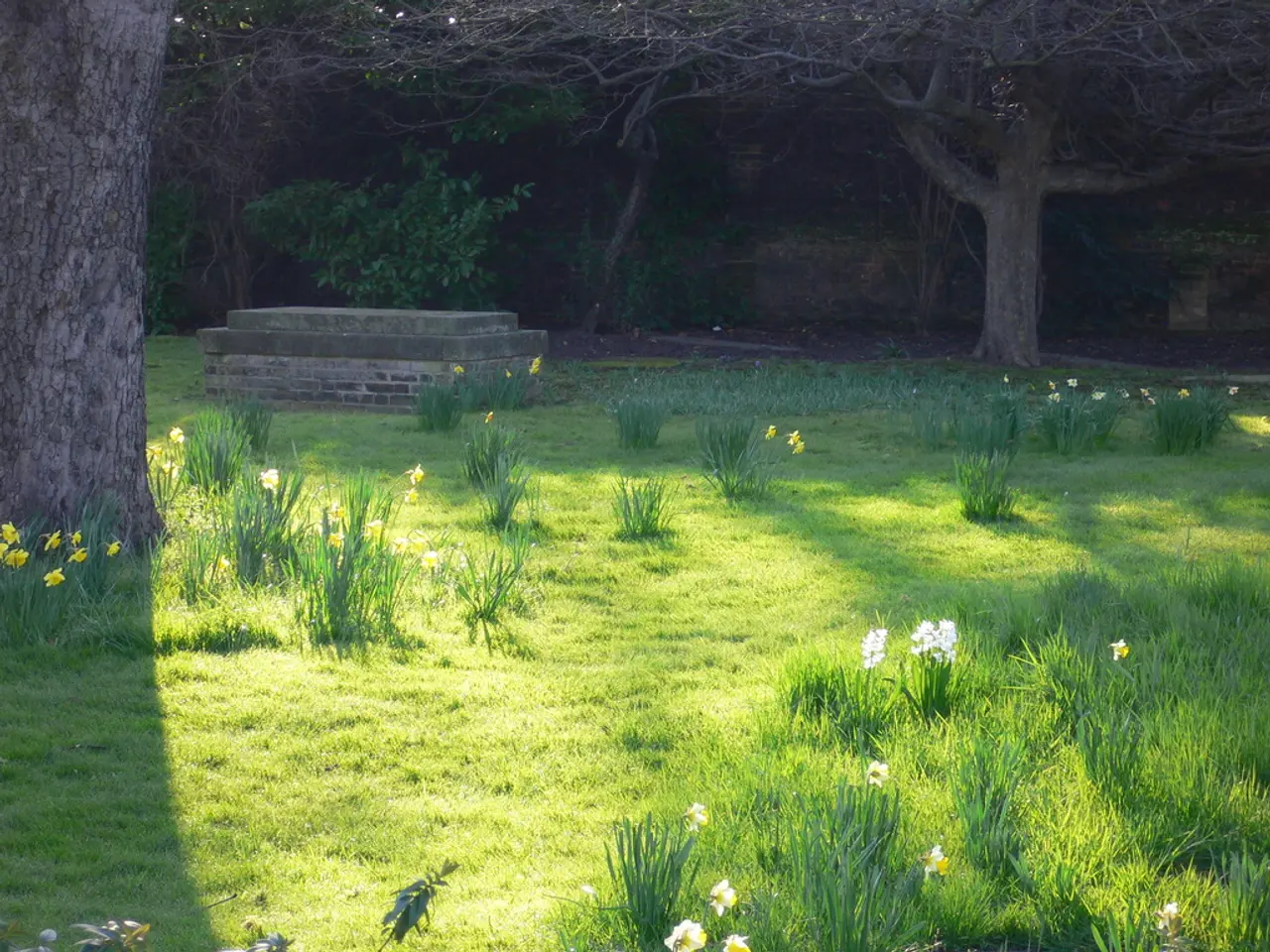Preparing Next Year's Flower Bed or Vegetable Patch in Autumn Season
Gardening: Plan Ahead for Next Year's Crop
My hands were black from the soil as I heaved the withered tomato plant into the wheelbarrow. With each passing year, it seemed the weeds took over more of my garden plot. But now the plants had been pulled, and the ground lay barren. It was time to replan.
I couldn't help but feel a sense of disappointment. I had hoped for a bountiful harvest, but Mother Nature had other plans. My tomatoes had been meager, and my bell peppers were scarce. As I stepped back and surveyed the empty plot, it looked like an unpainted canvas, waiting for a new masterpiece.
This year was far from perfect, but next year would be different, I thought. My mind was buzzing with ideas, as I pondered over the failures and successes of this past season. I knew it was essential to learn from my mistakes and build upon my victories when planning next year's garden.
Ideally, I'd start the planning process during the darkest days of winter, when the cold glass of the window framed a brown earth outside. I'd wrap myself in a blanket, sipping a cappuccino, engrossed in gardening books, thumbing through seed catalogs, and making notes for the upcoming year. But a few years ago, I decided to mix things up. I realized that the planning process benefited when I began while the current season's garden was still fresh in my mind. Instead of waiting for the frigid winter days to plan, I'd make changes and prepare in the fall.
Here's how to get started:
1. Identify What Went Wrong
I couldn't help but feel a pang of regret as I pulled the last tomato plant up. I wished I had more tomatoes. Sure, I had plenty of canned tomato sauce and taco sauce, but I fell short on my supply of spaghetti sauce and crushed tomatoes, despite the numerous jars I had put away.
This year, like any, I had a few regrets. I made a mental note of my shortcomings as I examined each crop, committing them to memory for next year's garden.
2. Remember What Worked
As I trudged through the garden, I was feeling less disheartened. There were successes to be celebrated, and I vowed not to forget them come springtime. My corn crop had done surprisingly well, and I enjoyed two harvests. The successive crops had taught me that I could expand next year and have three.
Likewise, I finally understood the timing of summer squash and zucchini in my garden. With the yearly infestation of squash vine borers, I learned to plant early and get a bountiful harvest before they arrived. I decided to plant two separate plantings of squash and zucchini next year to ensure a successful, pest-free harvest.
3. Test Your Soil
Autumn is the perfect time to have a soil test done. Digging up a sample and sending it off to a lab would give me time to amend the soil as needed, ensuring optimal nutrients for next year's crops. I'd use this information to make informed decisions about what to plant and where to plant it.
4. Plan for Next Year
With a clear mind, I would take stock of what worked well, what didn't, and how I could better next year. I'd create a garden layout, plotting the position of each plant to promote growth, health, and companionship. I'd make a point to memorize the ideal spacing and planting density for each crop.
If the idea of designing a garden layout seemed overwhelming, I'd be there to help. I had created a chart to assist in the planning process, and I wanted to share it with others. It included a chart for each crop, allowing for notes on planting dates, location ideas, and any specific observations from the current season. The chart could be downloaded for free, and I was always available to offer further guidance.
5. Sow Cover Crops
The garden could benefit from cover crops, too. I would sow cover crops like winter rye, hairy vetch, or clover at the end of the growing season. Cover crops would help to reduce erosion, add nutrients, and improve soil structure. These benefits would carry over to the upcoming season, ensuring a better garden.
The fall was a time for reflection and planning, preparing me for a more fruitful growing season ahead. I looked forward to stepping out into the fresh air, feeling the warmth of the sun on my face, and tucking my seeds into the earth as I watched the first signs of life take root. Next year's garden was destined to be my best yet.
Want more expert guidance? Enter your e-mail address below to receive my best tips to plan and grow your garden in just 7 days -- all for FREE. Plus, you'll receive my information-packed e-mails on Fridays to give you resources to help you plan and succeed in next season's garden.
Privacy Policy: We respect your privacy. Your e-mail address will only be used to send you valuable gardening info and tips. You can unsubscribe at any time.
Get my FREE 7-day Gardening Planner now!
- To improve next year's garden, it's important to reflect on the mistakes and successes of the current season.
- A key step in garden planning is testing the soil in autumn, which allows amending the soil as needed for optimal nutrients in the upcoming season.
- Creating a garden layout with a chart can help visualize plant positions, planting dates, and optimal spacing for each crop.
- For resources on garden planning and information on creating a garden layout, consider downloading a free garden planner chart available online.
- Sowing cover crops such as winter rye, hairy vetch, or clover at the end of the growing season can help reduce erosion, add nutrients, and improve soil structure for a more productive garden in the following season.




